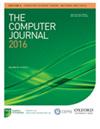出租车流量的深度时空预测模型
IF 1.5
4区 计算机科学
Q4 COMPUTER SCIENCE, HARDWARE & ARCHITECTURE
引用次数: 31
摘要
出租车客流预测对交通规划和基础交通资源配置具有重要意义。城市邻区流量预测不同于定点流量预测。它们的数据更加复杂和多样化,这使得预测它们更具挑战性。本文介绍了一种用于城市邻区流量预测的深度时空预测(deep - temporal forecasting,简称DeepSTF)模型,该模型将城市划分为网格,使其具有图形结构。该模型构建了一个时空计算块,利用图卷积网络提取空间相关特征,利用两层时间卷积网络提取时间相关特征。该模型基于膨胀卷积和因果卷积理论,克服了其他模型在处理快速变化数据时存在的欠拟合现象。为了提高预测的准确性,我们将天气作为一个隐含因素,并让其参与特征计算过程。并与现有的7种交通流预测模型进行了对比实验。实验结果表明,该模型具有较好的长期交通预测能力,在各项评价指标中表现良好。本文章由计算机程序翻译,如有差异,请以英文原文为准。
DeepSTF: A Deep Spatial–Temporal Forecast Model of Taxi Flow
Taxi flow forecast is significant for planning transportation and allocating basic transportation resources. The flow forecast in the urban adjacent area is different from the fixed-point flow forecast. Their data are more complex and diverse, which make them more challenging to forecast. This paper introduces a deep spatial–temporal forecast (DeepSTF) model for the flow forecasting of urban adjacent area, which divides the urban into grids and makes it have a graph structure. The model builds a spatial–temporal calculation block, which uses graph convolutional network to extract spatial correlation feature and uses two-layer temporal convolutional networks to extract time-dependent feature. Based on the theory of dilation convolution and causal convolution, the model overcomes the under-fitting phenomenon of other models when calculating with rapidly changing data. In order to improve the accuracy of prediction, we take weather as an implicit factor and let it participate in the feature calculation process. A comparison experiment is set between our model and the seven existing traffic flow forecast models. The experimental results prove that the model has better the capabilities of long-term traffic prediction and performs well in various evaluation indicators.
求助全文
通过发布文献求助,成功后即可免费获取论文全文。
去求助
来源期刊

Computer Journal
工程技术-计算机:软件工程
CiteScore
3.60
自引率
7.10%
发文量
164
审稿时长
4.8 months
期刊介绍:
The Computer Journal is one of the longest-established journals serving all branches of the academic computer science community. It is currently published in four sections.
 求助内容:
求助内容: 应助结果提醒方式:
应助结果提醒方式:


